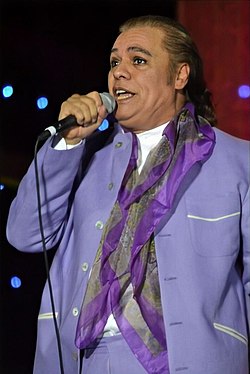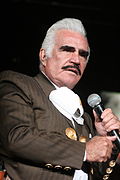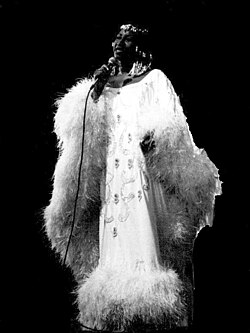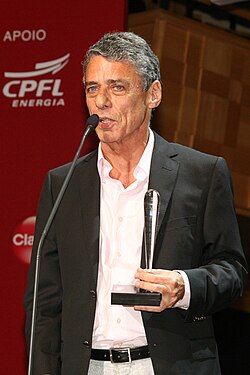Overview
By 1975, music market analysts predicted an 8 to 10% growth of Latin music internationally. [1] This growth also expanded into the United States which led to record labels of promoting Latin artists in the country. According to Billboard 's Marv Fisher, " international labels are increasingly involved throughout Latin America". [2]
Latin pop
Latin America went through the balada craze with balladeers from both the region and Spain having a huge Latin audience. Artists include José José, Roberto Carlos, Juan Gabriel, and Julio Iglesias. The latter artist would later become the best-selling male Latin artist of all time. [3]
Regional Mexican
Mariachi music in 1970s, while still popular in the Regional Mexican music field, was named "the last great decade for mariachi music" according to the Los Angeles Times critic Augustin Gurza. [4] The Mexican farmworkers movement since the 1960s led to the popularity corridos which dealt with their impoverished lives. [5] Most notably, norteño group Los Tigres del Norte emerged having performed songs that deal with social commentary. [6] Another emerging genre in the Regional Mexican field was Tejano. [7] Rigo Tovar modernized the Mexican style of cumbia by combining it with rock including utilizing an electric guitar and a synthesizer. [8]
Tropical/salsa
Salsa music was the dominant genre in the tropical field in the 1970s. Fania Records was the prime record label for popularizing and defining salsa music with artists such as Celia Cruz, Rubén Blades, Héctor Lavoe, and Willie Colón. [9] The Colombian vallenato remains popular in the country with artists such as Diomedes Diaz. [10] Likewise, the country's cumbia expanded its popularity outside of country into other Latin American nations including Mexico. Like its Mexican counterpart, the Colombia cumbia saw changes in the genre with the use of a bass guitar, organ, and less emphasis on brass instruments. [11]
Nueva canción
During the 1970s in Latin America, the 1960s music influence remained strong and two styles developed from it one that followed the European and North American trends and Nueva Canción that focused on the renewal of folklore including Andean music and cueca. Some bands such as Los Jaivas from Chile mixed both streams and created a syncretism between folklore and progressive rock. The Nueva Canción movement got an even more marked protest association after all countries in the Southern Cone became (or were already) military dictatorships in the 1970s. In Chile, the Nueva canción styles developed through the 1970s would remain popular until the return to democracy in 1990.
Rock en español

In the 1970s, rock en Español began to emerge (especially in Argentina), and as imitation bands became fewer, rock music started to develop more independently from the outside, although many rock bands still preferred to sing in English. The Argentine defeat in the Falklands War in 1982 followed by the fall of the mhilitary junta that year diminished need of Nueva Canción as protest music there in favour of other styles.
Brazilian/Portuguese
Jorge Ben's Fôrça Bruta 's fusion of Trio Mocotó's groove and Ben's more rockish guitar proved to be a distinctive feature of what critics and musicians later called samba rock. [12] The 1970s also saw the rise of Música popular brasileira, a form of protest songs against the Brazilian military dictatorship. Among the key musicians in the genre was Chico Buarque who was exiled from the country. [13]







